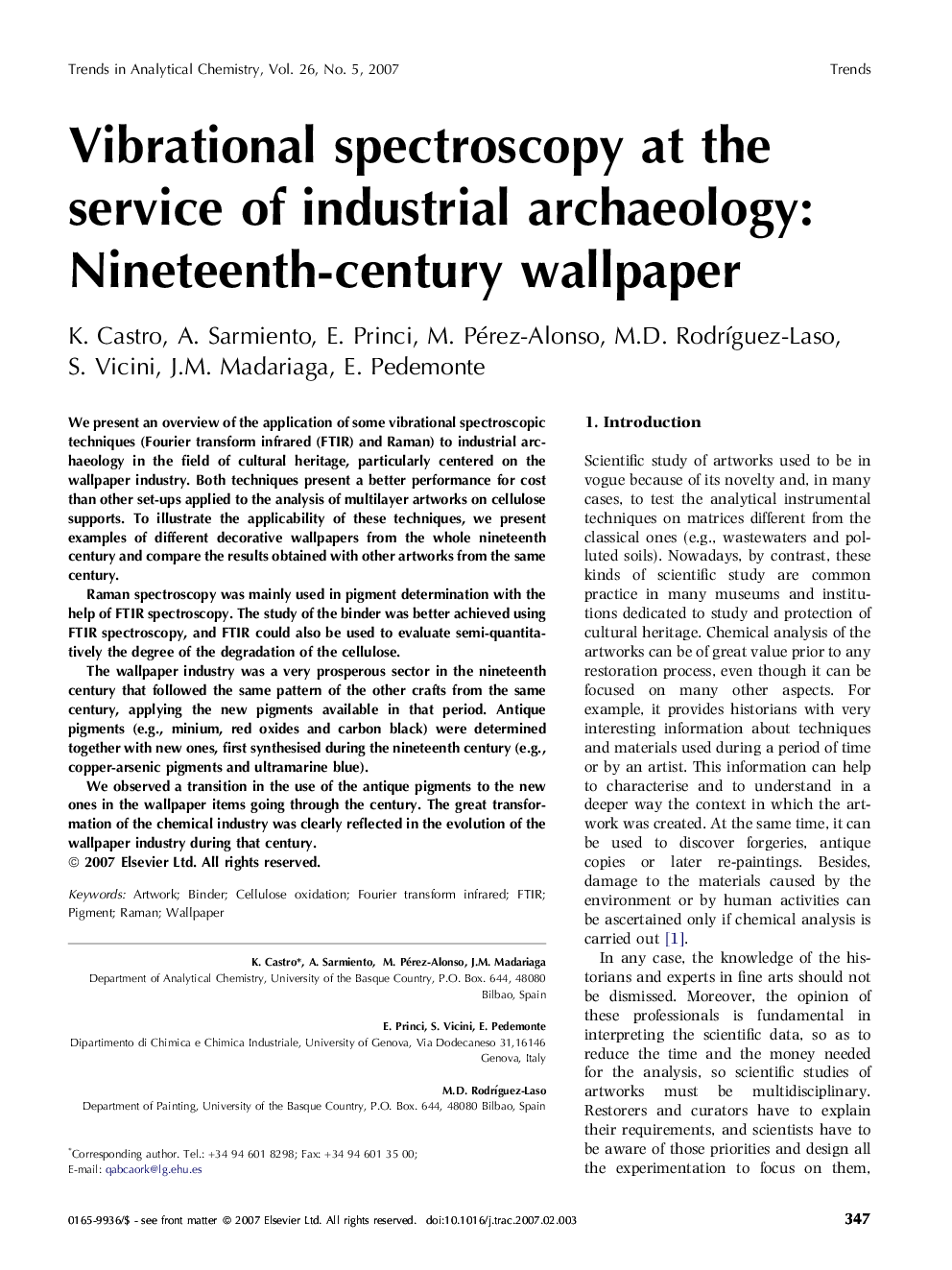| Article ID | Journal | Published Year | Pages | File Type |
|---|---|---|---|---|
| 1248849 | TrAC Trends in Analytical Chemistry | 2007 | 13 Pages |
We present an overview of the application of some vibrational spectroscopic techniques (Fourier transform infrared (FTIR) and Raman) to industrial archaeology in the field of cultural heritage, particularly centered on the wallpaper industry. Both techniques present a better performance for cost than other set-ups applied to the analysis of multilayer artworks on cellulose supports. To illustrate the applicability of these techniques, we present examples of different decorative wallpapers from the whole nineteenth century and compare the results obtained with other artworks from the same century.Raman spectroscopy was mainly used in pigment determination with the help of FTIR spectroscopy. The study of the binder was better achieved using FTIR spectroscopy, and FTIR could also be used to evaluate semi-quantitatively the degree of the degradation of the cellulose.The wallpaper industry was a very prosperous sector in the nineteenth century that followed the same pattern of the other crafts from the same century, applying the new pigments available in that period. Antique pigments (e.g., minium, red oxides and carbon black) were determined together with new ones, first synthesised during the nineteenth century (e.g., copper-arsenic pigments and ultramarine blue).We observed a transition in the use of the antique pigments to the new ones in the wallpaper items going through the century. The great transformation of the chemical industry was clearly reflected in the evolution of the wallpaper industry during that century.
